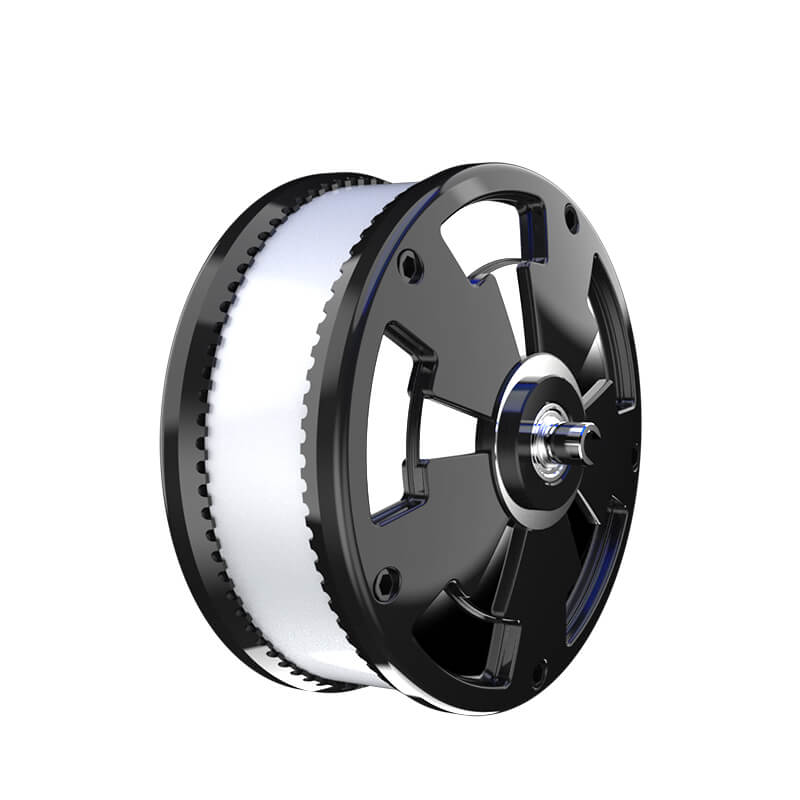part 1:
Imagine a world where machines move with the precision of a chess grandmaster, performing tasks that once seemed reserved for humans. From robotic arms assembling delicate electronics to camera rigs capturing flawless shots, servo motors are the unsung heroes that make this possible. But not all servo motors are created equal. Among the myriad types, two stand out due to their versatility and widespread application: positional servo motors and continuous servo motors. Understanding their differences isn't just a technical preference—it's a strategic choice that can define the success of your automation project.

The Basics of Servo Motors
Before diving into the distinctions, let's revisit what a servo motor fundamentally is. At its core, a servo is a rotary or linear actuator that allows for precise control of angular or positional movement. Unlike simple motors, servos incorporate a feedback mechanism—commonly a potentiometer, encoder, or resolver—that constantly monitors their position and provides data to a control system, enabling accurate adjustments.
Why the Confusion?
Many define servo motors simply as "motors with position control," but the reality is more nuanced. The broad umbrella covers a spectrum of devices, from small hobbyist servos used in RC cars to high-precision industrial servos. Among these, positional and continuous servo motors serve distinct yet sometimes overlapping roles.
Unpacking the Positional Servo Motor
A positional servo motor—sometimes called a "standard servo"—is the workhorse behind applications requiring accurate, repeatable positioning. Think robotic arms, medical devices, or antenna tracking systems. The hallmark feature of these servos is their ability to move to a specified position and hold it steadfastly.
How does it work? It uses a feedback loop where an internal sensor, such as an encoder, measures the current position and compares it to the target (commanded) position. If there's a discrepancy, the control circuit adjusts the motor's output until the desired position is reached. When the position is achieved, the servo maintains that position against external forces, thanks to a control mechanism that continuously applies torque to hold the motor steady.
Applications of Positional Servos
Robotics arms and grippers CNC machinery and precision tools Automated camera systems Antenna positioning
Advantages of Positional Servos:
Precise control of position and speed Repeatability and accuracy over long periods Ability to hold positions against external forces Integration with complex control systems
Limitations:
Typically operate within a range (like 0°-180° or 360°) Require more complex control circuitry and feedback systems Can be relatively slower when moving between positions due to their control algorithms
Enter the Continuous Servo Motor
Contrasting sharply with their positional counterparts are continuous servo motors, also known as "endless rotation servos" or "360° servos." As the name suggests, these servos do not move to a specific position but rotate freely and continuously, much like an ordinary DC motor, but with integrated control.
How does it work? Instead of position feedback, continuous servos interpret control signals as commands for speed and direction. When given a neutral signal (often a PWM signal with a pulse width around 1.5 ms), they stop. Adjusting the PWM signal above or below that neutral causes the motor to spin in one direction or the other. The faster the signal departs from the neutral, the faster the servo spins.
Applications of Continuous Servos
Conveyor belts and automated carts Remote-controlled vehicles and drones Moving parts in conveyor systems Hobby projects requiring rotation without position control
Advantages of Continuous Servos:
Simple control: speed and direction control achieved with a single signal No need for feedback components in many cases Easy to integrate into setups where rotation is continuous and not position-specific Cost-effective solution for simple automation tasks
Limitations:
Cannot hold a position or linearly respond to positional commands Less precise control over where the motor stops or stays Requires a different control logic, often less complex in hardware but more complex in application calibration
How to Decide Between the Two?
Choosing the right servo hinges upon understanding the core needs of your application:
Precision and Positioning: If your task requires exact movement to a specific point and then holding that position—like robotic arms or CNC tools—a positional servo is your best bet.
Continuous Rotation Needs: For applications where constant or variable rotation over unlimited angles is necessary—think wheels, fans, or conveyor belts—a continuous servo is more appropriate.
Control Complexity and Cost: Positional servos often involve more sophisticated control systems and higher costs, but they deliver accuracy. Continuous servos tend to be cheaper and simpler to implement when positional control isn't critical.
Power and Torque Requirements: Consider the torque characteristics relative to your application. Positional servos often excel at holding heavy loads without slipping, while continuous servos are optimized for sustained motion rather than holding.
The Overlap and Flexibility
It might seem at first glance that they are entirely different, but sometimes the line blurs. Hobbyists, for example, frequently modify continuous servos to act as positional servos by calibrating the feedback and control mechanisms. Conversely, some advanced servo systems incorporate hybrid features, allowing both position and continuous operation depending on control signals.
Let’s pause for now. Understanding these fundamental differences and their practical implications sets the stage for a deeper dive into specific applications, technology advancements, and the future trends shaping servo motors.
(Part 2 will continue with real-world case studies, technological innovations, and strategic advice for selecting the right servo motor based on operational needs. Stay tuned!)
Kpower has delivered professional drive system solutions to over 500 enterprise clients globally with products covering various fields such as Smart Home Systems, Automatic Electronics, Robotics, Precision Agriculture, Drones, and Industrial Automation.




































